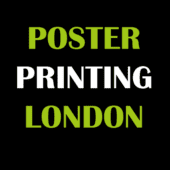Mastering the Art of Poster Presentations: A Comprehensive Guide
Introduction
Poster presentations are a popular format for sharing research findings, project updates, or innovative ideas in academic and professional settings. They offer a visually appealing and concise way to communicate complex information to a diverse audience. However, crafting an effective poster presentation requires careful planning, design, and delivery. In this article, we will explore the essential steps to create a compelling poster presentation that captivates your audience and effectively communicates your message.
Step 1: Define Your Objectives
Before diving into the design process, clarify the objectives of your poster presentation. Are you aiming to showcase research findings, propose a solution to a problem, or highlight a particular project? Understanding your goals will guide the content and design choices throughout the poster creation process.
Step 2: Organize Your Content
Structure your content in a clear and logical manner to guide viewers through your poster. Typically, a poster presentation consists of sections such as introduction, methods, results, discussion, and conclusion. Use concise text, bullet points, and visuals to convey key points effectively.
Step 3: Design Your Poster
The visual appeal of your poster plays a crucial role in attracting and retaining the attention of your audience. Choose a clean and professional layout with consistent fonts, colors, and imagery. Use high-resolution graphics and photographs to enhance visual interest and reinforce your message.
Step 4: Practice Effective Communication
Prepare a brief and engaging oral presentation to accompany your poster. Practice speaking clearly and confidently, focusing on the most important aspects of your research or project. Be prepared to answer questions and engage in discussions with attendees.
Step 5: Engage Your Audience
During the presentation, actively engage with attendees by making eye contact, inviting questions, and encouraging discussions. Use visual aids such as handouts or digital supplementary materials to provide additional information and resources.
Conclusion
Mastering the art of poster presentations requires a combination of thoughtful planning, effective communication, and engaging design. By following the steps outlined in this guide, you can create a compelling poster that effectively communicates your message and captivates your audience. Remember to clarify your objectives, organize your content, design your poster with visual appeal, practice effective communication, and engage your audience during the presentation. With these strategies in place, you can confidently present your research findings, project updates, or innovative ideas in any academic or professional setting.
